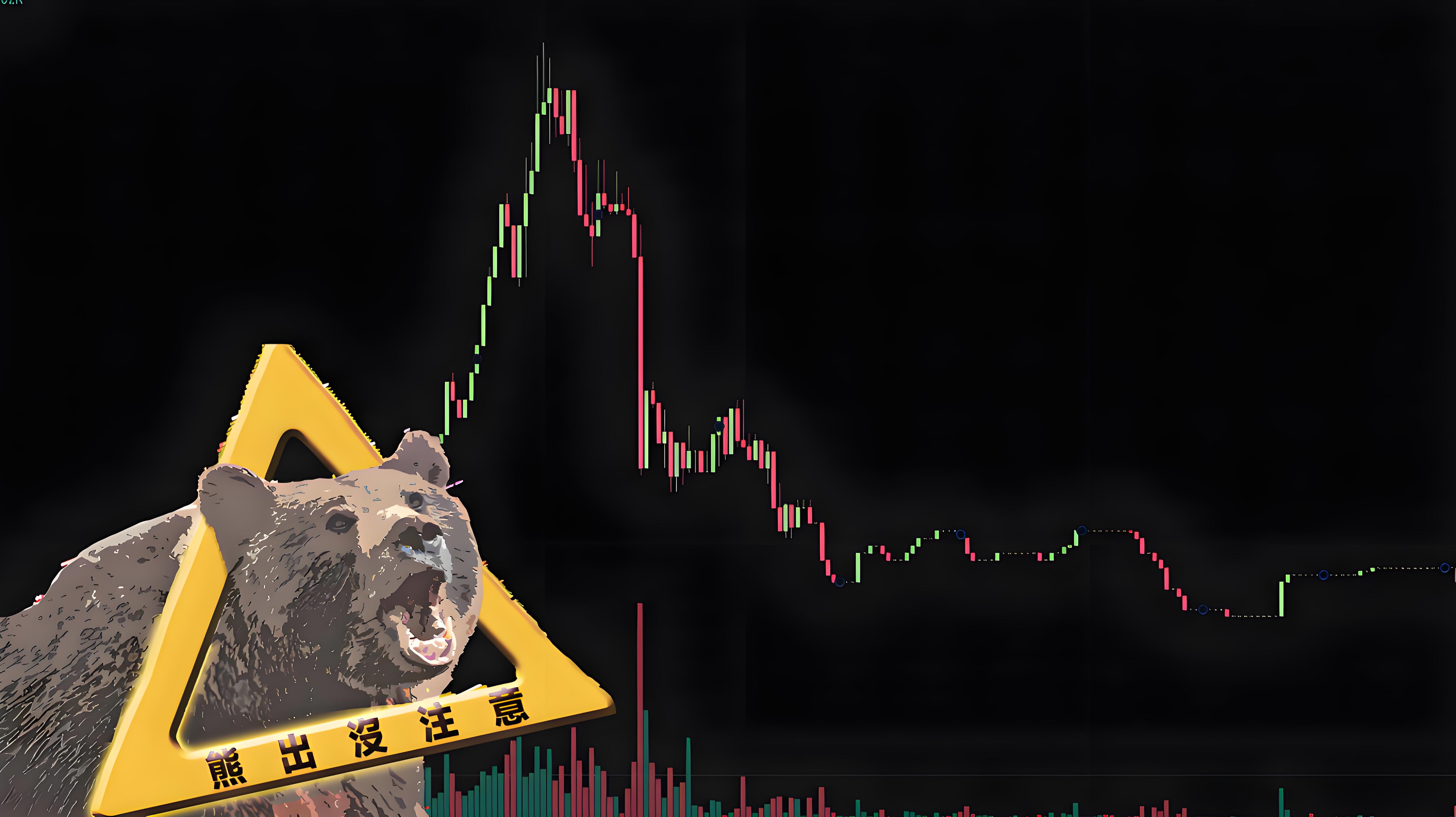In the first quarter of 2025, the crypto market experienced a drastic adjustment, with mainstream coins and some low-market-cap coins falling, with mainstream coins generally falling by more than 30%. Due to the historical peak of project runaways, the surge in low-quality projects, and the use of celebrity effects (such as TRUMP and MELANIA tokens) to harvest retail investors, these events triggered a series of chain reactions, the overall market confidence was frustrated, leading to the spread of user pessimism, a sharp drop in liquidity, and a sharp correction in the market. Data shows that the current total market value of cryptocurrencies has evaporated 28% from the peak at the beginning of the year, and the market liquidity index has dropped to the 2023 bear market level.
Does this crisis, triggered by speculative bubbles, security vulnerabilities and regulatory pressure, indicate that the crypto market is slowly entering a cold winter? 
1. Event Review: From Carnival to Collapse of Meme Coin Market
(1) The meme coin bubble burst: the TRUMP coin plummeted and fake projects proliferated
- Trump concept coin collapses: The market value of TRUMP, a meme coin associated with the Trump family, once exceeded US$15 billion, but plummeted 60% after it went online. Funds were diverted to other political tokens (such as Melania Coin), and market confidence quickly collapsed.
- False information and hacker attacks: The account of the co-founder of the World Liberty Financial project was hacked, and fake Meme coins were promoted in the name of the Trump family, resulting in a loss of about $27 million in user assets and a crisis of trust. Similar incidents have occurred many times in January 2025 and are not uncommon.
(2) Market data reveals risks: the proportion of speculative transactions has increased
- Meme coin trading volume accounts for 11% of the top 300 crypto assets (excluding stablecoins), but high volatility has led to liquidations of $346 million in 24 hours.
- The number of newly issued tokens on the Solana chain has surged. CoinMarketCap statistics show that there are nearly 11 million types of cryptocurrencies, most of which are Meme coins with no actual value. A large number of speculative transactions have plunged the market into a "battle for attention", exacerbating the dilution effect of funds and gradually emerging a crisis of trust.
2. Multiple causes behind the collapse
Community-driven vulnerability
Meme coins rely on community consensus and emotional hype, and lack technical or application support. For example, $Pepe coin has rapidly risen with the cultural symbol of "sad frog", and its price fluctuations are correlated with the social media sentiment index by 0.93. Once negative events or celebrity remarks trigger panic, the risk of collapse increases dramatically.
Security vulnerabilities and user information leakage
Frequent hacker attacks: The Meme coin project has become a major target for hackers due to its low technical threshold and weak security measures. In addition to the World Liberty Financial incident, the theft of user funds at the DEXX exchange in November 2024 has exposed the industry's security shortcomings.
The proliferation of fake projects: Using the influence of celebrities to hype has become a common method used by criminals, and investors suffer losses due to information asymmetry. In the past two days, whether it is the craze caused by CZ's pet dog Broccoli or the Argentine president's promotion of LIBRA, some traders have used it to manipulate prices and absorb funds from new investors. This "cutting leeks" behavior is gradually becoming an important part of market risks.
Regulatory pressure and deteriorating market environment
Tightening regulation: The US SEC has begun to shift to "guided regulation". The FIT21 Act attempts to clarify the division of responsibilities between the SEC and the CFTC, but the risk of faults in policy implementation has further exacerbated market uncertainty. At the same time, Dubai regulators issued a risk warning for Meme coin on February 17.
Market oversaturation and macroeconomic shocks: Meme coins have absorbed the speculative premium of technology altcoins, and 36 million altcoins have diluted market liquidity in the face of competition for limited funds. Factors such as the U.S. national debt exceeding $36 trillion, debt rating downgrades, and escalating trade wars (such as Trump’s “reciprocal tariff” policy) have intensified expectations of global liquidity tightening, and the crypto market and other risky assets have been under pressure at the same time.
3. Chain reaction : Has the bear market signal arrived?
1) Investor confidence is dampened
Low profits and widespread losses: Data from the Pump.fun platform shows that only 0.412% of wallets have made more than $10,000 in profits through Meme coin transactions, and more than 99% of participants have become "bubble victims"
2) Capital flight and liquidity exhaustion
The collapse of Meme coin triggered a massive flight of funds from the crypto market. The price of Bitcoin fell from a high of $100,000 to $96,000. The market entered a "risk-off mode" and liquidity declined.
3) The industry’s trust crisis intensifies
Decentralized projects have been accused of becoming "vassals of power," such as World Liberty Financial, which suffered a loss of tens of millions of dollars, exposing the hidden dangers of political manipulation and capital harvesting.
4) Weak technical narrative
Although Ethereum's Pectra upgrade attempted to improve performance through account abstraction and Layer 2 optimization, the valuations of new public chains such as TON and SUI were inflated, and technological innovation failed to hedge against market speculation.
5) Developers and project owners are alienated
The market is full of Rug Pull projects and fake communities, and it is difficult for high-quality projects to get the attention they deserve. For example, the RWA project Plume Network once promised $4.5 billion in asset support, but the actual TVL was only $64 million, which greatly hit the confidence of developers and project parties.
IV. Ways out and suggestions: Bear market survival strategy - six golden rules for ordinary players

In the current context of market confidence crisis and capital depletion, how can ordinary players protect themselves and find a way out in a bear market? The key to surviving a bear market is to stay calm in the midst of craze and accumulate in the trough. The following six golden rules may provide some ideas for investors:
Rational analysis, refuse to blindly follow the trend
At a time when market sentiment is extremely volatile, it is particularly important to remain calm and think independently. Investors should focus on fundamental research, be wary of projects that rely on hype and gimmicks, and avoid becoming "leeks" in short-term surges and plunges.
Diversify investments to reduce the risk of a single asset
Try to avoid over-concentrating funds on a certain type of high-risk assets. By diversifying investment layout, you can not only balance the impact of market fluctuations, but also help capture high-quality targets in different industries or technical directions, thereby improving overall risk resistance.
Strengthen security protection and enhance defense awareness
Faced with frequent hacker attacks and fake projects, investors must strengthen their own security protection. It is recommended to use hardware wallets, two-factor authentication and other measures, and conduct a thorough investigation of the project background to avoid irreparable losses due to security vulnerabilities or phishing scams.
Manage positions reasonably and focus on risk control
In times of market volatility, it is crucial to develop and strictly implement a position management strategy. Set reasonable stop-profit and stop-loss positions to avoid chasing ups and downs, so as to avoid suffering excessive losses in volatile markets. Reasonable position control can help investors maintain a stable mentality in a bear market.
Pay close attention to regulatory and market trends
Changes in regulatory policies and shifts in the market environment often have a profound impact on prices. Investors should maintain a keen eye, pay close attention to the latest developments of domestic and foreign regulatory agencies and macroeconomic data, and flexibly adjust investment strategies to cope with unexpected risks.
Cultivate long-term investment concepts and focus on the intrinsic value of projects
Although the market is flooded with a large number of speculative projects in the short term, truly valuable projects are often based on technological innovation and practical applications. Ordinary players should stay away from short-term speculation and patiently invest in high-quality projects with robust technology, clear business models, and excellent team support, so as to wait for the market to pick up in the bear market and achieve long-term value-added.
Conclusion
Cycles never repeat, but rules are eternal. History shows that each cycle of the crypto market is different, but the underlying rules (such as institutionalization and technological iteration) always exist. The collapse of Meme coin is not only a reflection of the cyclical adjustment of the market, but also an opportunity for the crypto industry to transform from "speculative frenzy" to "value building". Although the current market sentiment is low and liquidity is shrinking sharply, just as the cyclical adjustment of the market often creates opportunities for long-term reshuffles and structural upgrades, every crisis may become an important turning point for the industry to reshape trust and move towards maturity.
A short-term bear market may be difficult to avoid, but in the long run, only through technological innovation, improved supervision and enhanced user safety awareness can we rebuild the industry's trust foundation and promote the crypto ecosystem to develop in a healthy and transparent direction. Just as pessimists warn of risks and optimists explore ways out - the future of the crypto market depends on sober choices at every step.











